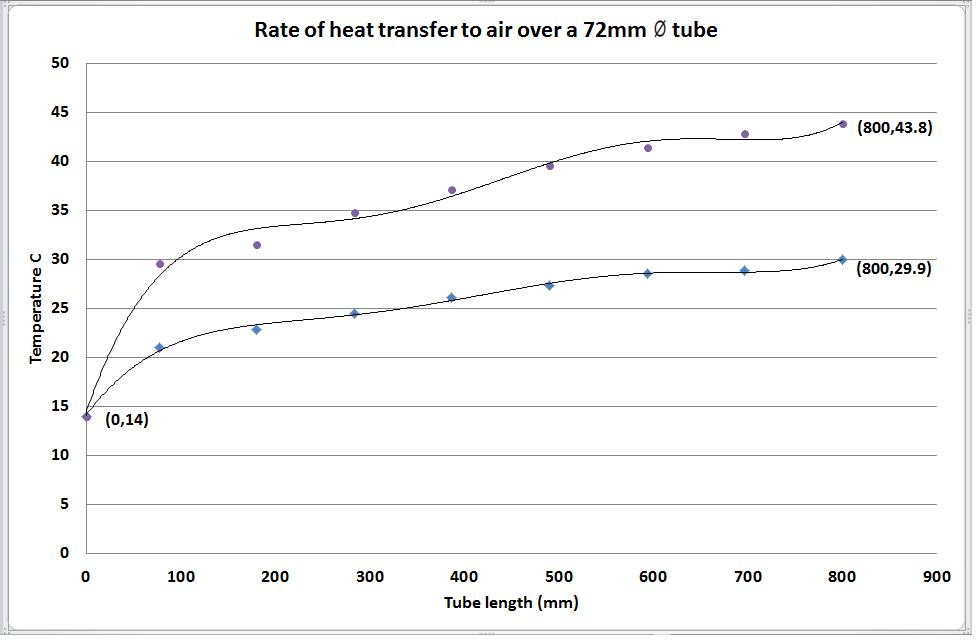Ventilation systems
Based on our test data so far, directly solar heating air at medium flow rate is more than five times as efficient as indirectly heating air from solar electricity generation when based on a 17% electricity conversion rate of PV panels for example.
Manufacture of a prototype
Data from testing our in situ model gave valuable insights about the important features of the solar ventilator design:
Rapid heat transfer to high air volumes over a relatively short distance proving that the design works very effectively.
Excellent heat retention due to design and good insulation
Uninhibited flow at more than 950 m3/hr without straining the fan.
Significant natural thermal siphoning in both the hot and cold seasons added to our efficiency of the system which averaged about 150%. Additional efficiencies of the system were largely due to the heat differential between outside and the heat generated inside the solar ventilator causing air to be forced up passively.
Sourcing fresh air from the solar side of the building also added to some preheating and increased efficiency values for the system
Fluctuations in efficiency were also linked to the amount of heat actively being stored or released from the solar ventilator which acts as a heat sink.
Nocturnal radiation caused efficiencies to drop well below zero due to the temperature of the air at the outlet of the solar ventilator being significantly lower than the ambient temperature at night. This can be usefully used during summer nights to cool the building.
One of the most interesting and important lessons from the lab and in situ tests were the number of variables influencing our efficiency results relating not only to the solar ventilator itself but also to the system, such as fluctuating flow rates due to significant thermal siphoning and the amount of heat stored inside the solar ventilator. Realizing it would be impossible to pin down an efficiency factor in this way, we carried out simulation tests on four tubes using different heat transfer techniques while using the same parameters and dimensions.
We found that the designed tubes can more than double heat transfer to air volume as compared with a plain tube (blue line). This simulation test proves why Sojol’s methods to optimize heat transfer are so effective.
Solar ventilator and commercially sized PV panels
The result is good news for the solar sector because it minimizes solar facing surfaces required for space heating and cooling. It therefore increases the possibility that other solar means, PV panels and solar thermal, will in the future meet decentralized energy needs for self-sufficient buildings.
Sojol’s roof mounted solar ventilator is meticulously designed and engineered to be durable and easily maintained.
Interlocking tubes form an absorbing panel under 98% light transmissive glass. The area between the glazing and the top of the tubes is well sealed to prevent soiling and to preserve its efficiency over the long term. Air flow is confined to the tubes which are designed to maximize volume and solar heat gain.
A lower and upper penetration for a 250mm diameter duct enters the building connected to a ducted system and controls.
The glazed lid and lid of the upper damper box can be propped up if access is ever required. And the whole unit is integrated into the roof with flashing
The aperture of the roof solar ventilator is 1m x 2.1m which is roughly similar to commercially sized PV panels.




